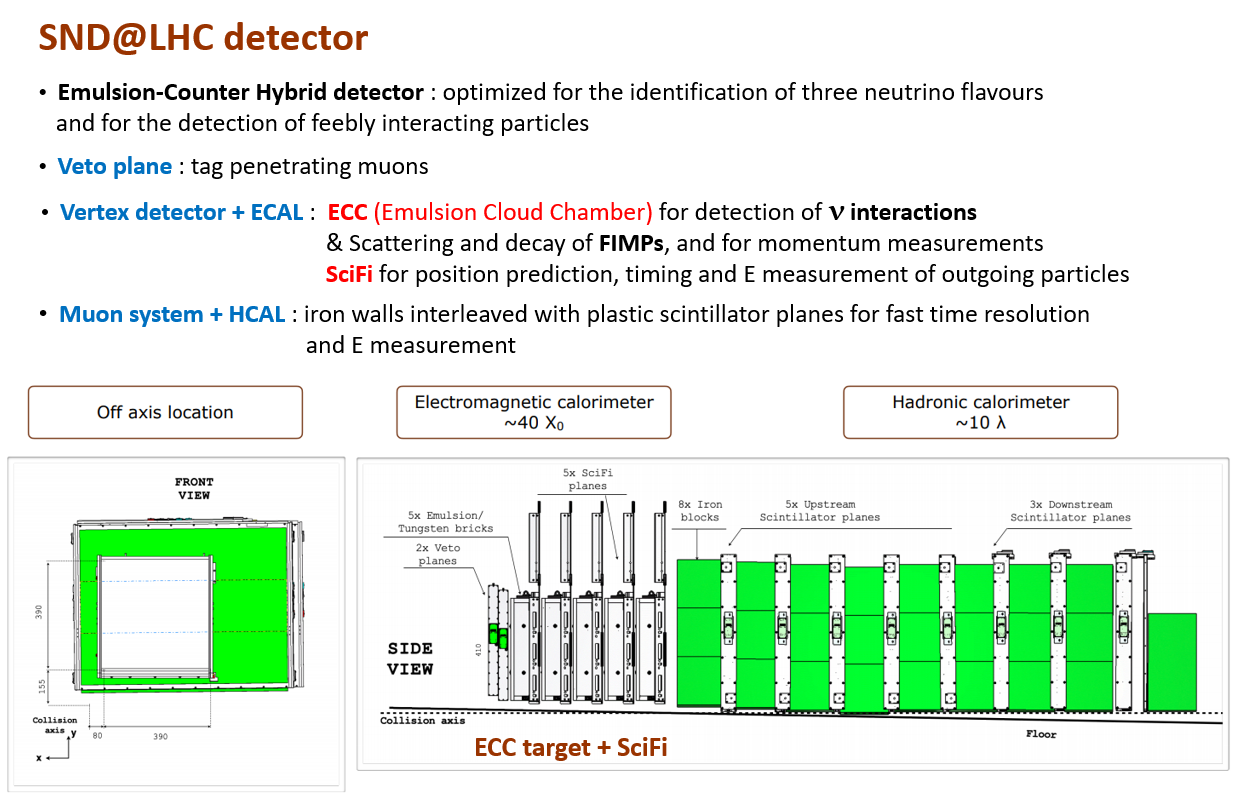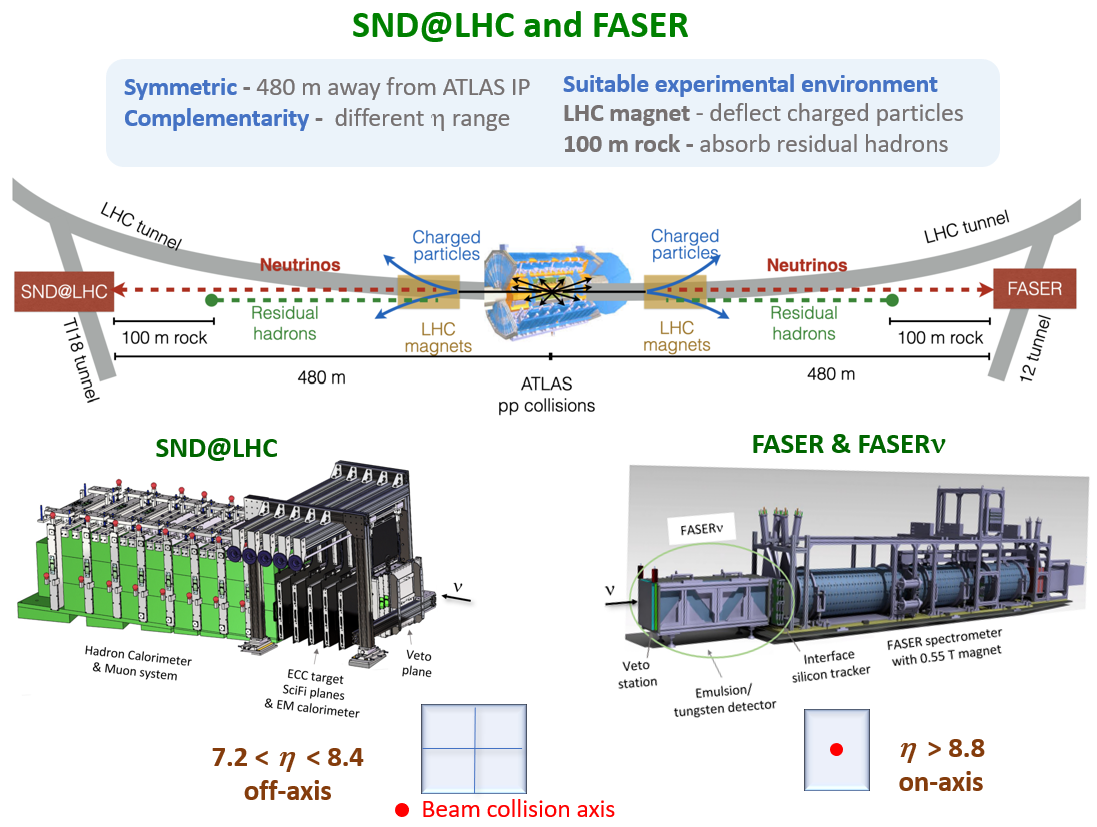-
The SND@LHC experiment
Scattering and Neutrino Detector at the LHC
The SND@LHC (Scattering and Neutrino Detector at the LHC) is a newly approved experiment (the 9th CERN LHC experiment) whose goal is to directly detect Collider neutrinos at TeV energies for the first time and search for Feebly interacting particles (FIPs) in an unexplored domain. Unlike the four big LHC experiments, the SND@LHC sits in a tangent line from the interaction point (IP) and therefore it can detect "Forward moving particles" which will cover the high pseudo-rapidity region (7.2 < η < 8.4). The SND@LHC detector will be installed in TI18 tunnel, 480m away from ATLAS IP and positioned slightly off the beam axis on the opposite side of FASER. In order to identify neutrino interactions of the three flavours and search for FIPs via their scatterings on the target, the ECC (Emulsion Cloud Chamber) will be used together with electronic detectors. The ECC which is composed of nuclear emulsion films interleaved with tungsten plates can play the roles of both target and precision tracker. It displays the tracks of the particles produced from the neutrinos and FIPs scatterings, while the electronic tracking devices provide time stamps for these tracks. The tracking devices also measure the energy of the particles together with the downstream muon detector. It is expected to begin taking data when the LHC Run 3 starts up in 2022.




